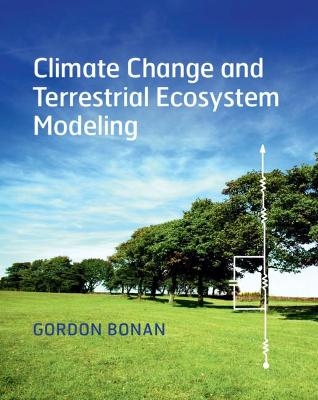
Climate Change and Terrestrial Ecosystem Modeling
Cambridge University Press (Verlag)
978-1-107-04378-7 (ISBN)
Climate models have evolved into Earth system models with representation of the physics, chemistry, and biology of terrestrial ecosystems. This companion book to Gordon Bonan's Ecological Climatology: Concepts and Applications, Third Edition, builds on the concepts introduced there, and provides the mathematical foundation upon which to develop and understand ecosystem models and their relevance for these Earth system models. The book bridges the disciplinary gap among land surface models developed by atmospheric scientists; biogeochemical models, dynamic global vegetation models, and ecosystem demography models developed by ecologists; and ecohydrology models developed by hydrologists. Review questions, supplemental code, and modeling projects are provided, to aid with understanding how the equations are used. The book is an invaluable guide to climate change and terrestrial ecosystem modeling for graduate students and researchers in climate change, climatology, ecology, hydrology, biogeochemistry, meteorology, environmental science, mathematical modeling, and environmental biophysics.
Gordon Bonan is senior scientist and head of the Terrestrial Sciences Section at the National Center for Atmospheric Research in Boulder, Colorado. He studies the interactions of terrestrial ecosystems with climate, using models of Earth's biosphere, atmosphere, hydrosphere, and geosphere. He is the author of Ecological Climatology: Concepts and Applications (3rd edition, Cambridge, 2015) and has published 150 peer-reviewed articles in atmospheric science, geoscience, and ecological journals on terrestrial ecosystems, climate, and their coupling. He is a Fellow of the American Geophysical Union and the American Meteorological Society and has served on advisory boards for numerous national and international organizations and as an editor for several journals.
Preface; List of symbols; 1. Terrestrial biosphere models; 2. Quantitative description of ecosystems; 3. Fundamentals of energy and mass transfer; 4. Mathematical formulation of biological flux rates; 5. Soil temperature; 6. Turbulent fluxes and scalar profiles in the surface layer; 7. Surface energy fluxes; 8. Soil moisture; 9. Hydrologic scaling and spatial heterogeneity; 10. Leaf temperature and energy fluxes; 11. Leaf photosynthesis; 12. Stomatal conductance; 13. Plant hydraulics; 14. Radiative transfer; 15. Plant canopies; 16. Scalar canopy profiles; 17. Biogeochemical models; 18. Soil biogeochemistry; 19. Vegetation demography; 20. Canopy chemistry; Appendix; References; Index.
| Erscheinungsdatum | 15.02.2019 |
|---|---|
| Zusatzinfo | 52 Tables, black and white; 63 Halftones, black and white; 153 Line drawings, black and white |
| Verlagsort | Cambridge |
| Sprache | englisch |
| Maße | 208 x 260 mm |
| Gewicht | 1260 g |
| Themenwelt | Mathematik / Informatik ► Mathematik ► Angewandte Mathematik |
| Naturwissenschaften ► Biologie ► Ökologie / Naturschutz | |
| Naturwissenschaften ► Geowissenschaften ► Meteorologie / Klimatologie | |
| Naturwissenschaften ► Physik / Astronomie ► Astronomie / Astrophysik | |
| ISBN-10 | 1-107-04378-6 / 1107043786 |
| ISBN-13 | 978-1-107-04378-7 / 9781107043787 |
| Zustand | Neuware |
| Haben Sie eine Frage zum Produkt? |
aus dem Bereich


